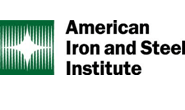Steel Products
CRU: Iron Ore Holding High as China’s Steel Production Remains Elevated
Written by Erik Hedborg
August 4, 2023
Iron ore prices remained elevated in July, averaging $112 per dry metric ton (dmt) for the month, unchanged from June.
This is a high price level, considering that seaborne supply has started showing signs of strength with key producers reporting robust production numbers and exports from both Australia and Brazil remaining elevated.
In addition, our sources in the market all point toward supply continuing to improve in H2’23, with Brazilian producers especially being very active in the freight market.

So, what are the key factors that are holding up iron ore prices? To answer this question, we once again turn our attention to China.
- Chinese steel production has stayed at high levels over the past month. CISA has continued to report strong production numbers, and steelmakers have become increasingly optimistic with margins rising slightly during the month.
- The story of low iron ore inventories continues. Mills have reported record-low inventories at hand, and our trader contacts are mentioning that there is no rush to restock iron ore, even with market conditions improving slightly. Steelmakers now prefer to buy iron ore from ports in smaller volumes, rather than booking entire Cape-size cargoes.
- The stagnation of the Chinese economy has resulted in many people taking long positions on the futures markets, in hopes of further stimulus measures ahead. So far, this has not materialized, and iron ore prices fell by ~$8/dmt after what the market perceived as a disappointing outcome of the politburo meeting at end July.

In recent news, we are hearing from our sources that steel production cuts are expected to be rolled out in China shortly. Until then, steel production will remain elevated. Once the cuts are implemented, we expect mills to initially keep production high and reduce output towards year-end. Then pollution controls are likely to come in place.
As a result, we have raised our short-term prices slightly and now only expect prices to dip below $100/dmt for a short period of time before bouncing back in Q4. With lower output at the end of the year, we have also lowered our Q4 forecast slightly.
The next edition of CRU’s Iron Ore Market Outlook will be published at the end of September 2023. Until then, our subscribers can monitor the latest developments in the iron ore market through CRU’s weekly Iron Ore Dashboard and in our upcoming Insights on Chinese steel and iron ore demand.
Erik Hedborg
Read more from Erik HedborgLatest in Steel Products

S232 lifts EU HR price over US, Asian HR still well behind
Domestic hot-rolled coil prices were flat this week after dropping for four straight weeks. Most offshore markets bucked the trend and gained ground.

SMU Steel Demand Index dips into contraction
SMU’s Steel Demand Index has moved into contraction, according to late April indicators. The slowdown comes in response to growing tariff uncertainty after the index reached a four-year high in late February.

Nucor selects Fives Group for new galv line at CSI
Nucor Corp. has tapped Fives Group as its partner in designing and manufacturing the new continuous galvanizing line being added at its California Steel Industries (CSI) joint venture in Fontana, Calif.

AISI: Raw steel production levels off near six-month high
The volume of raw steel produced by US mills remained relatively flat last week, maintaining the rebound seen one week prior, according to the American Iron and Steel Institute (AISI). Previously at the second-highest rate of the year, production continues to hold at one the strongest levels recorded over the last six months.

Nucor keeps HRC price unchanged
Nucor has kept its weekly hot-rolled (HR) coil price flat this week, after a marginal cut the previous week.
